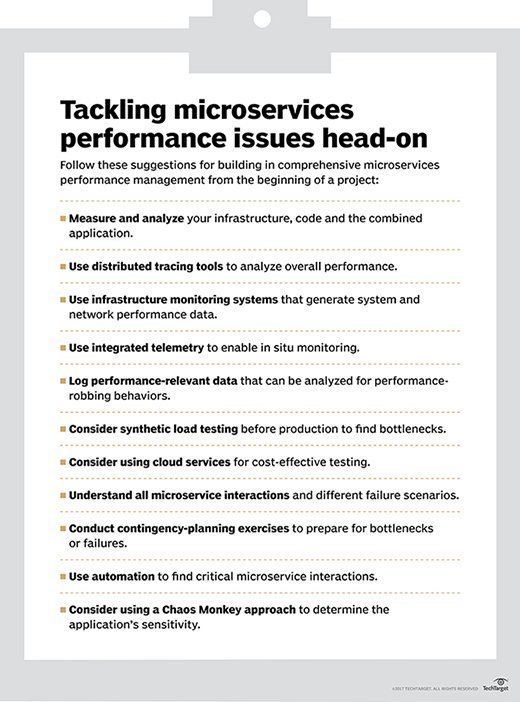
freshidea - Fotolia
Prepare to face these 4 common challenges with microservices
The benefits of microservices come with a cost. Review four common ways breaking up a monolith can actually complicate routine application development and management tasks.
A microservices architecture can enable better flexibility and performance, but it can also severely complicate fundamental tasks, such as service discovery, testing, network management and monitoring. As enterprises add more microservices to applications, they need to understand how a distributed architecture will change day-to-day application management processes.
Let's examine four pressing challenges with microservices development and management -- and how to overcome them.
Too much to monitor
A network outage, software bug or system failure can bring down an entire monolithic application. While a microservices architecture ensures an application functions even when a single service fails, this enhanced fault tolerance comes at a price.
The decoupled nature of microservices makes it particularly complex to identify failures via manual monitoring and testing methods. And, when teams can't identify a problem, they risk losing application functionality or causing concurrent service failures.
The answer to this problem is a comprehensive, automated monitoring program. Manual methods simply won't cut it when there are so many services to track.
Versioning
Versioning is one of the trickier challenges with microservices. Teams design, develop and deploy microservices independent of one another. This creates a problem when it comes to versioning -- namely, that service compatibility can be lost. Make sure it's possible to revert back to the previous version of a service in case something goes wrong.
Design a microservices-based application to provide support for multiple versions of a service. This requires the necessary routing logic to be in place to help the application support multiple versions of the microservices at runtime.

Scalability coordination
To scale a monolith, the entire application needs to scale. To scale a microservices-based application, only certain components need to scale, which optimizes resource usage.
However, this scalability model can also lead to complexity. To successfully scale individual services, it is critical to first identify those that need to scale and to maintain compatibility once they do. Coordinate the scaled service's underlying components, and proactively identify the specific parts of the application that need to scale.
Service mesh solves integration woes
When an entire application breaks down into several microservices, take advantage of a service mesh to integrate these services. This dedicated infrastructure layer helps keep track of a multitude of microservices by controlling service-to-service communication and providing a dedicated layer for service requests to pass through. Service mesh tools, such as Istio and Linkerd, can provide many out-of-the-box features, including load balancing, encrypt/decrypt, authentication and authorization, service discovery, circuit breakers and rate limiting.
Heavy performance demands
Performance also poses one of the biggest challenges with microservices development.
Microservices-based applications consume more resources and place a greater burden on servers than monolithic applications, which means additional servers might be required. These resource demands make it critical to code efficiently and understand the specific dependencies among two or more microservices. Prepare to scale up server capacity quickly in case of high performance demands and also scale down during times of lower demand to avoid wasting server resources.







